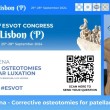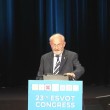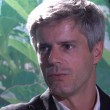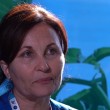Randy J. Boudrieau
DVM, Diplomate ACVS, ECVS Undergraduate Education (College):
Sept 1970-Dec 1974 B.Sc (Physics - with Distinction)
University of Washington
Seattle, Washington
Advanced Degrees:
Doctor of Veterinary Medicine, 1978
Washington State University
College of Veterinary Medicine
Pullman, Washington
Board Certification:
Diplomate, American College of Veterinary Surgeons 1987
Diplomate, European College of Veterinary Surgeons 2007
Professional Positions:
May 2005-present. Professor Section Head - Small Animal Surgery Department of Clinical Sciences
Cummings School of Veterinary Medicine at Tufts University 200 Westboro Road North Grafton, Massachusetts 01536
Tufts University School of Veterinary Medicine The Angell Memorial Animal Hospital 350 South Huntington Avenue Boston, Massachusetts 02130
G.S-S. Going back in time, do you recall when you decided to be a veterinarian and when and why did you specialise in orthopaedics?
R.B I had initially developed an interest in science in secondary school, and enjoyed mathematics, and initially was interested in [aerospace] engineering; however, I pursued a physics degree at the university after being intrigued/encouraged by one of my university professors. Although I enjoyed pursuing this area, I missed the day-to-day people/social interaction and the hands-on of other endeavours, and the physics studies became a bit too abstract for me – especially at the quantum mechanics level by the time I approached receiving my university degree. I completed these studies – and my university degree requirements, but then shifted to the biological sciences. I also became interested in medicine at that time, it also seemed natural to pursue veterinary medicine as I was very involved with dogs at a number of levels, such as training and showing – and always seemed to have an innate understanding of dog behaviour. My wife often tells me our own dogs think I am one of them! I think my earlier experiences in school, and the sciences – not to mention my Type-A personality, stimulated a perfectionist attitude, which resulted in my pursuing a veterinary internship, and then residency upon obtaining my veterinary degree. The physics background, especially mechanics, led me to the residency, specifically surgery – and to orthopaedics once I started my academic faculty career, which all seems quite natural when I reflect on this now.
G.S-S. Did one particular individual influence your choice and possibly, later become maybe become your mentor?
R.B. My interest in orthopaedics was initially aroused in my 3rd year of veterinary school in 1976-1977 by Dr. James Chalman, a new faculty member fresh from his residency at The Ohio State University. As you are aware, it was here that the AO methods were just introduced (1st AO Vet course in 1970) and being adopted in veterinary surgery in the mid-1970s; a pivotal person at The OSU was Dr. Bruce Hohn with whom I also was fortunate enough to connect with later. The principles approach made perfect sense, especially considering my mechanics background, and I was hooked. Jim obviously was instrumental in providing me my original direction. After my internship, I was not altogether familiar with the surgical training programmes, but received some excellent advice and mentoring from Dr. Ken Sinibaldi, with whom I spent considerable time during my days off; I spent two years in private practice after my internship. Ken further encouraged my interest in orthopaedics during this time (again due to the AO influence; note that Ken was a resident at the Animal Medical Center when Bruce made his original trip to Davos and the AO). Both Jim and Ken were very influential in my being successful in obtaining a surgical residency at The OSU. It was here that Dr. Richard Rudy also had a great influence on me. His innovative approaches to orthopaedic surgery, and his expertise with ‘pin and wire’, and ESF techniques showed me another side of fracture management. He was also the individual that inspired my interest in maxillofacial trauma, which has persisted today. The other individual that had a major impact on me was Dr. Steven Arnoczky, whom I worked with during my residency on my research project: naturally the cranial cruciate ligament! Steve was then visiting scientist in the Department of Research in the Laboratory of Comparative Orthopaedics at The Hospital of Special Surgery in New York. I had met Steve a few years earlier through Ken, as they were together at The Animal Medical Center in NYC. You may notice a recurring theme with all of these individuals! Steve was most helpful with his guidance for the research and also the subsequent presentation at the ACVS Resident’s Forum and also with the eventual manuscript. He has continued as my most influential mentor and friend over the years.
G.S-S. Did some aspects of orthopaedics grab you attention and drive you to research on a particular subject?
R.B. Orthopaedic trauma was the first carrot, and the fracture repair techniques of the AO were both sensible and stimulating – even though at that time we reconstructed all fractures! I look back at the considerable time we spent meticulously reconstructing multiple piece fractures – a definite ‘lost art’! However, those experiences remain useful, even today, when dealing with intra-articular and peri-articular fractures, despite the prevalence of more ‘biological’ approaches. Part and parcel of this was maxillofacial trauma, and at that time seeing the early advancement of the AO methods influence this area with the development of the mini-plating systems, which revolutionized this field in the late 1970s/early 1980s. I was fortunate enough to become involved with one of the earliest mini-plating systems, modelled after the ‘Champy method’, and successfully applied it to the dog and cat for fracture fixation. My interest in this area has continued, despite what I would consider a meagre caseload in this area. Also during my residency, total hip replacement in the dog was relatively new (Richards II prosthesis!), which has expanded with newer modular cemented systems, and of course the cementless systems. We have come a long way with treatment of the hip joint, and also with the current development and application of this technology to other joints. Along the way, I also developed an interest in angular deformity correction and the biomechanics of fracture fixation, especially more recently with the newer locking plate technology. Interestingly, my initial foray into biomechanical testing was fuelled at the end of my residency when one of my case reports for the ACVS application (15 case reports were required – in addition to two ‘First authored publications’) was criticized for applying a plate for fracture repair on the medial surface of the radius. It made intuitive sense to me that this position had some major advantages, and resulted in my orchestrating an ex vivo study that documented the biomechanical advantages. The mentality of ‘proving’ a point, whether it was through an experimental or clinical research study was born. ‘Bench studies’ in biomechanics continues to be a focus of interest for me, not only for the reasons outlined, but also as vehicles to train residents; an obvious advantage to these studies with the limited time-frame available in the residency programme, and the finite/doable nature of such a research project – a win-win situation.
I obtain a great deal of academic satisfaction with the clinical research projects with the attendant resident mentoring, from inception of their particular project, to its development and execution, and finally the presentation and eventual manuscript. To play a small role in their education/development as part of the Tufts surgical residency programme, which culminates in their ability to successfully attain their credentials and board certification, results in a great deal of personal pride. The ability to help mentor these exceptional individuals is a major reason I remained in the academic environment.
The ability to contribute new ideas and evaluate them clinical remains a driving force in my research interests, where the academic environment is ideally suited to these endeavours. The latter has not only allowed me to broaden my horizons with the many national and international contacts I have been so fortunate to develop over my career, but also foster it. Nothing happens in a vacuum, and the camaraderie of the many people I have come to know – and ideas we have discussed/worked on together – have all played a significant role in any success I have attained.
















